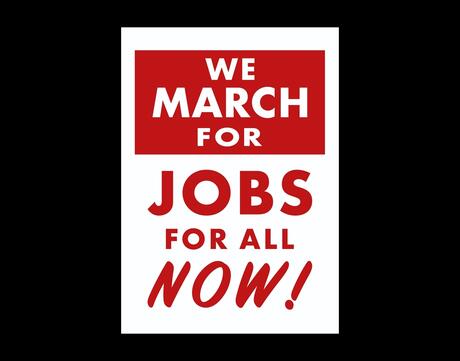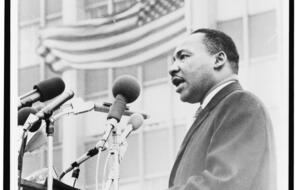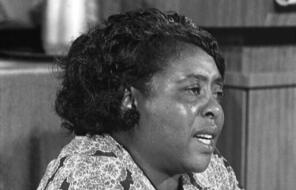
Teaching about Labor Rights History
Why Learning about Labor Rights Is Important
Most people start their first jobs when they’re quite young. The Fair Labor Standards Act states that the minimum age for employment in certain sectors is just 14. Whether someone first enters the workforce as a teen or later into their young adulthood, being brand new to employment comes with its own learning curve. NBC News notes that “young people are more susceptible to abuses and violations at work.” The more knowledgeable students can be before they start to work, the more empowered they are to seek and find employment that is healthy, fulfilling, and mutually beneficial to employee and employer.
Facing History teaches that democracy is fragile. We know that the strength of our laws—and the rights that those laws protect—rely on citizens who are willing to participate and vote. When teaching and learning about social movements it’s important to consider the way your own community designates who is worthy of respect and dignity, and ask what can happen when community members don’t feel a sense of obligation toward one another.
As you learn more about the history of labor rights, think about these questions.
- Why is it important to have employment rights protected?
- Can you think of any current barriers to employment that people might experience today?
- What are a few ways that businesses and hiring managers can promote equity?
Having these questions in mind can help build a thorough understanding of what rights were gained, and what it took to obtain these rights, and allows each of us to learn from history so that we are moved to stand up for equity and engage in the democratic process.
An Overview of Labor Rights
Labor rights are an integral part of our society—they provide stability and safety for workers, while also trying to ensure fair and equitable treatment for both employers and employees. Everyone deserves to have their rights respected and upheld. Some of the most basic labor rights include the elimination of forced labor or child labor, the right to receive an understood minimum wage, the right to take breaks and time off, and the right to collective bargaining without recrimination.
The first modern labor rights were established in the early 19th century following the advancement of the Industrial Revolution with the introduction of the Factory Act of 1833 in the United Kingdom. The United States followed suit, and in 1866 the National Labor Union was established in Baltimore, Maryland. The Library of Congress notes that it was “the first attempt to create a national labor group in the United States and one of their first actions was the first national call for Congress to mandate an 8-hour work day.” Since then, labor rights have been expanded and codified in a variety of international agreements, most notably the International Labour Organization’s (ILO), a United Nations agency.
The Struggle for Equity
Of course, the founding of labor rights organizations did not fix labor inequities once and for all. For example, the Economic Policy Institute reported in 2023 that the gender wage gap has actually grown of late. “Women, on average, were paid 20.3% less than men in 2019. By 2022, that gap widened to 22.2%.” Such an obvious pay divide brings to mind the fight women have waged throughout US history to be recognized as equal, but of course the net can be cast much wider to examine the legacy of discrimination not just of women, but also of BIPOC individuals.
The civil rights movement and labor rights are inextricably linked. Most everyone knows of the famous 1963 March on Washington where Martin Luther King Jr. delivered his iconic “I Have a Dream” speech—what is less known is that the full name of that civil rights demonstration was the March on Washington for Jobs and Freedom. Among the picket-style signs held by people in the crowd of 250,000 included messages like “Civil Rights Plus Full Employment Equals Freedom” and “No U.S. Dough to Help Jim Crow Grow.”
Labor unions and civil rights leaders wanted the same thing: better pay and equal rights. Dr. King’s messages of racial justice included equal economic opportunity and speaking out against the exploitation of workers. In fact, King was a key player in organizing the Memphis Sanitation Workers’ Strike. The duties required of the sanitation workers were difficult and often dangerous. They were also severely undercompensated. The pay for a sanitation worker in 1968 was $1.80 per hour. Even those who worked full time were eligible for food stamps. Over the course of several weeks King and other labor and civil rights leaders led a number of protests and demonstrations advocating for workers rights, and in early April 1968 in what would become his last public address—known today as “The Mountaintop Speech”—he prompted his audience to consider the question, "If I do not stop to help the sanitation workers, what will happen to them?"
The fight for civil rights and the push for labor rights are both part of the broader struggle for justice and equality. In the 1950s and 60s Black Americans engaged in sit-ins, boycotts, marches, and other acts of civil disobedience to challenge the economic, political, and social inequalities that they faced. Similar tactics were also used by labor unions. The civil rights movement also had a strong influence on labor unions, inspiring them to become more inclusive and to fight for the rights of all workers, regardless of race.
Resources for the Classroom
Lesson: Memphis in 1968: The Sanitation Workers' Strike
Students learn about the sanitation strike and reflect on the relationship between identity, dignity, and community membership. This is part of Facing History’s mini-unit Memphis 1968 which explores events that brought Dr. King to Memphis in the spring of 1968.
Lesson: California Grape Workers’ Strike: 1965–66
Learn about the first year of the Delano grape strike, when grape workers in California's San Joaquin Valley went on strike to demand higher wages and better work conditions. This is part of Facing History’s mini-unit Latinx Rights in 1960s California.
Lesson: Rights of Workers
These materials from Share My Lesson include a Fact Sheet, Quiz, and Take Action Activity to help your class visualize and understand the rights that are protected for every US employee.
Lesson: Labor Movement in the US
This multimedia lesson from C-Span Classroom offers a fascinating timeline delving into how different industries and groups of workers have changed the way labor is performed and how workers have been treated over the course of US history.
Collection: History Sites
The Labor History Resource Project has curated over 50 web pages covering labor history. Their linked resources provide a huge amount of information and interactive material to dive deep into any moment in US labor history.
Video: “Labor Union Activism Is on the Rise, Recalling the Great Depression”
Explore Retro Reports resource on how new groups of American workers are pushing to form labor unions at restaurants, stores, and warehouses. It’s the biggest surge of labor activism since the 1930s.












